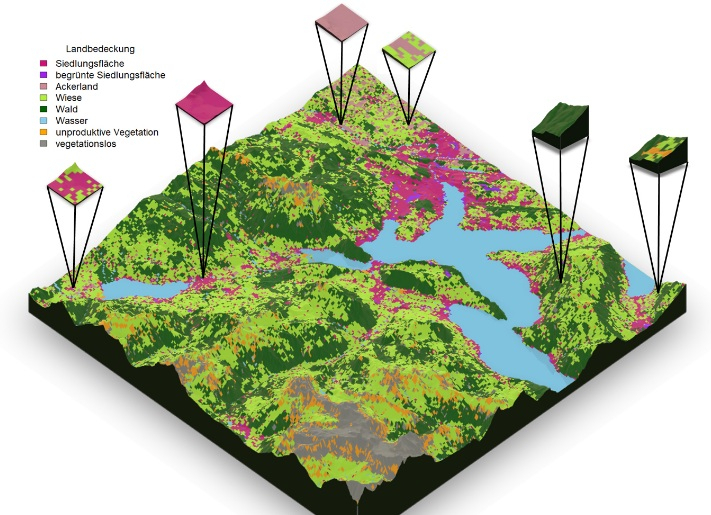Until now, biodiversity research has mainly focused on the number of plant species that are present in an ecosystem but for the first time researchers at Zurich examined 5,000 landscapes to study how different landscapes influence plants.
"The real landscapes are much more complex than the small experimental areas examined in science. In addition to natural, they also consist of many parts influenced by humans, such as arable land or settlement areas," says Pascal Niklaus, professor at the Institute for Evolutionary Biology and Environmental Sciences at the University of Zurich.

Landscape areas in Switzerland
The team has examined for the first time how different landscape areas influence plants in a landscape, using aerial photographs to record the land use of 4,974 landscape areas from all over Switzerland. Besides green areas such as meadows and forests, they also examined areas heavily influenced by humans, such as arable land and settlements, and bodies of water with the help of satellite observations to determine the plant productivity over a period of 17 years.
"Landscapes consisting of a more complex mosaic of different land uses are more productive than those that are less mixed," said Niklaus, pointing out that the positive relationship between more diverse land use and higher productivity does not depend on the region, the climatic conditions or the altitude. In fact, the plant productivity of diverse landscapes was more constant over time and more diverse landscapes actually better buffers of climate fluctuations.
Diversity mechanisms
The positive effects of landscape diversity arise regardless of the diversity of plant species in these areas and the interactions of differently used areas improve the function of the whole landscape. It is similar to how different types of plants interact in small areas enabling the ecosystem work better.
"In the case of landscapes, fundamentally different mechanisms must be involved that cannot occur in the small test areas examined so far," says Jacqueline Oehri, first author of the study. In addition to biodiversity, the way in which different land uses are spatially interwoven also supports the function of landscapes, they say.









